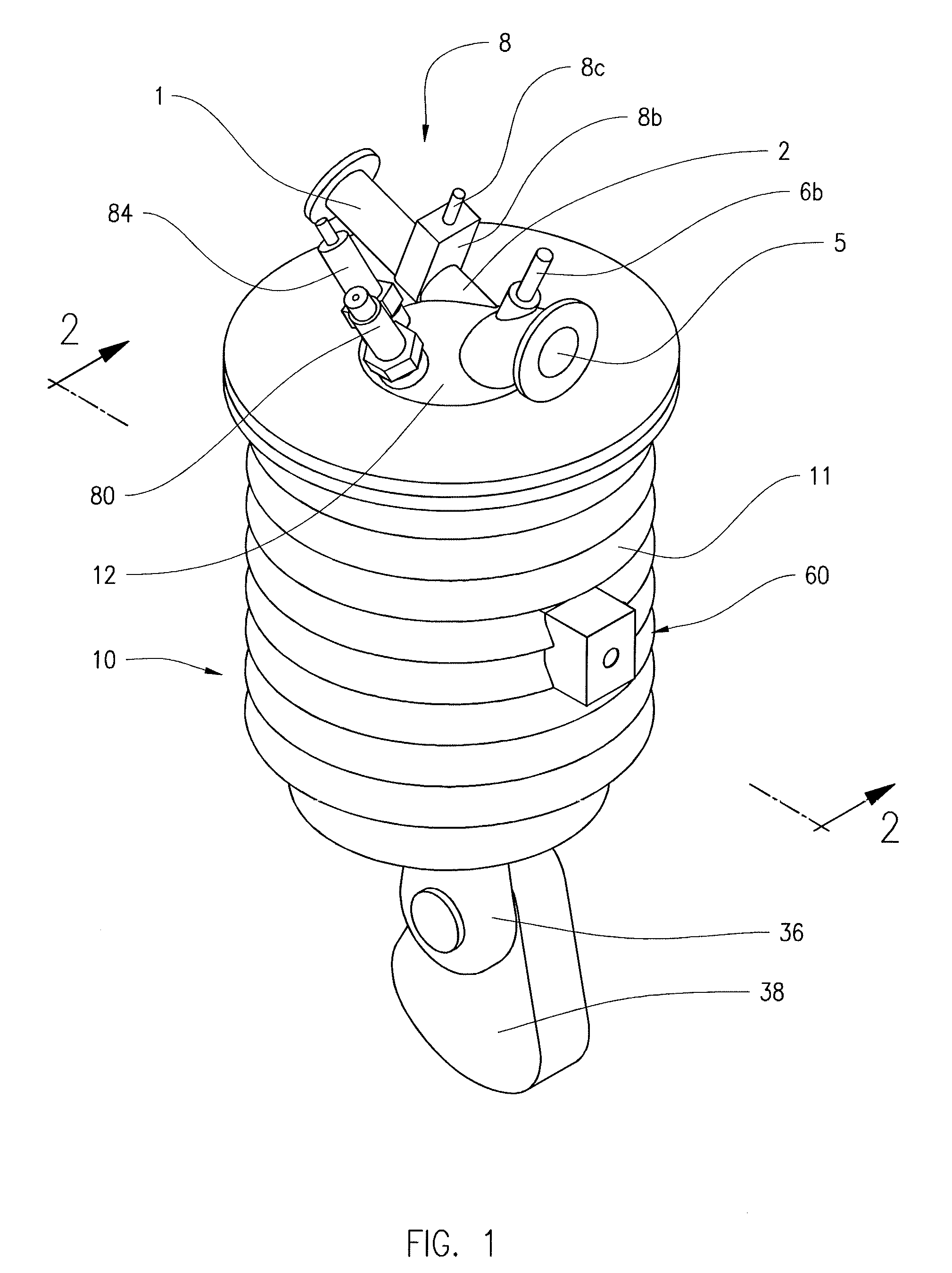Full expansion internal combustion engine with co-annular pistons
a technology of internal combustion engine and co-annular piston, which is applied in the direction of engine sealing arrangement, cylinder, feed system, etc., can solve the problems of limiting the thermal efficiency that can be achieved with these engines, reducing efficiency, and reducing release, so as to achieve high-energy ignition source, significant power output, and large heat energy reduction
- Summary
- Abstract
- Description
- Claims
- Application Information
AI Technical Summary
Benefits of technology
Problems solved by technology
Method used
Image
Examples
first embodiment
[0027]an engagement means includes a mechanical securement of the outer cylinder 10 to the outer piston 20. FIGS. 2 and 3 show an engaging device 60 disposed in the outer cylinder 10 that selectively engages the outer piston 20 and secures the outer piston 20 to the outer cylinder 10. The engaging device 60 includes a pin 62 that can extend from and between a first position that is out of engagement with the outer piston 20, as shown in FIGS. 7-11, and a second position engaged with the outer piston 20, as shown in FIG. 2-6. The pin 62 engages a bore 27 disposed in the inner cylindrical wall 24 of the outer piston 20. The movement of the pin 62 is an axial movement, inward from the outer cylinder 10. Movement of the pin 62 between the first position and the second position engaged in the bore 35, occurs when the crown 22 of the outer piston 20 is adjacent the cylinder head 12, as shown in FIGS. 2, 6, 7 and 11. FIG. 2-6 shows the pin 62 engaged within the bore 27 with the outer pisto...
second embodiment
[0029]an engagement means includes a magnet coupling, including a first magnetic member 52 disposed on the underside of the cylinder head 12, and a second magnetic member 54 disposed on the annular crown 22 of the outer piston 20. The first and second magnetic members have magnetically attractive forces when activated which assist to hold the outer piston 20 to the cylinder head 12. The magnetic members can be permanent magnets which exert attractive forces whenever the two magnetic members are in proximity. The magnetic members can also be selectively magnetic, and can include an electromagnetic coupling. Either one of the first or second magnetic members can be the magnetically active member, and the other is the magnetic-attracting member. In the illustrated embodiment, a plurality of the first magnetic members 52 are distributed annularly within the flange of the cylinder head 12, and a corresponding and registering plurality of the second magnetic members 54 are distributed ann...
PUM
 Login to View More
Login to View More Abstract
Description
Claims
Application Information
 Login to View More
Login to View More - R&D
- Intellectual Property
- Life Sciences
- Materials
- Tech Scout
- Unparalleled Data Quality
- Higher Quality Content
- 60% Fewer Hallucinations
Browse by: Latest US Patents, China's latest patents, Technical Efficacy Thesaurus, Application Domain, Technology Topic, Popular Technical Reports.
© 2025 PatSnap. All rights reserved.Legal|Privacy policy|Modern Slavery Act Transparency Statement|Sitemap|About US| Contact US: help@patsnap.com



